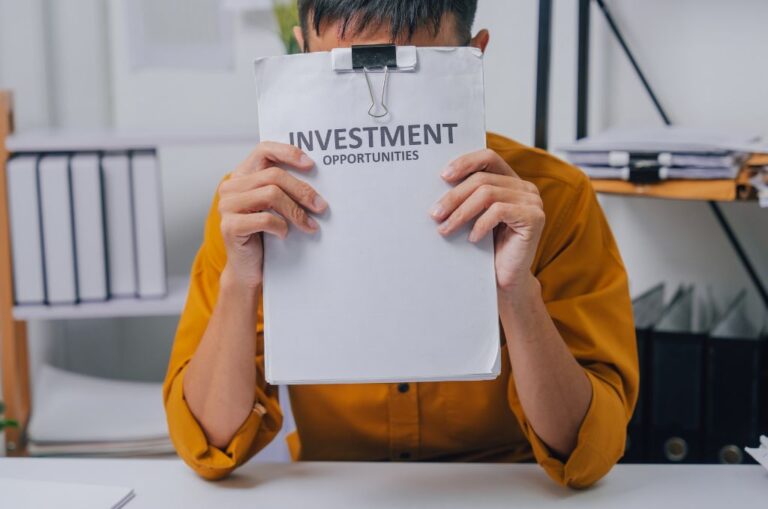Keen to know how to invest during inflation and simultaneously worried that you’re investing in the right way or not? Have a look here!
Inflation has become a topic of ordinary conversation these days, and there’s an excellent reason for that. Inflation is now the highest in 30 years.
Many people going about their day who weren’t exposed to inflation before may not know what it’s or how it affects investments.
The growth of investments is critical to most people saving money for retirement. Still, lengthy periods of inflation can have a tangible impact on the returns in those accounts, which’re even closer to retirement, and who need to reduce the risk in their portfolio.
The truth is that inflation is complicated, but once you understand precisely what it is and how it can affect your portfolio, you can set yourself up for expectations about the near future. Also, it will help you to avoid mistakes that will end up costing you money in the long term.
What is Inflation?
Whenever someone – inevitably an older person – is talking about how much they paid for their house back in the 1950s, it probably makes you feel a bit sick. The average house price in the 1950s would have been about $7,000 – 8,000.
That seems like a minimal number compared to now; but you need to bear in mind the average income of the US in the same period was about $3,300.
The economic force behind the rise in the price of homes and everything else is inflation. Economists describe inflation as the downfall in purchasing power of a currency over time. It just means a dollar now will be worthless in the future; and it’s the reason the penny is now almost entirely useless.
How Does it Affect Investors?
Inflation affects the price of everything. While central banks make every effort to allow inflation to rise reasonably, the vast cash payments during the pandemic created an environment where inflation could rise higher than usual.
Investors dislike inflation more than anyone else because they see inflation as a silent tax that whittles away their returns each year. That’s why it is essential for anyone new to investing in understanding the difference between total returns and actual returns.
Total returns are shown as a percentage and compare the year’s ending balance with the beginning balance to show how much your money has grown.
Actual returns take that exact figure and decrease the return by the annual rate of inflation. For instance, if the average inflation rate over a year was 2% and the total return was 8%, the real return at year’ end would be 6%. It helps put the actual gains into perspective.
Now that inflation has reached 6%, the real return on the same portfolio would only be 2%. It may not seem like much, but investors do not like rising inflation.
It’s Important to learn about some investments to avoid when inflation is higher before learning how to invest during inflation? Let’s take a look into this.
Investments to Avoid When Inflation Rises
Cash: Cash is perhaps the worst investment to hold when inflation rises. Cash does not accrue any interest, so you are effectively seeing the full force of inflation reducing the value of your cash accounts. Inflation is 6% right now, so the cash you hold in your account will have a complete 6% less buying power at the end of the year. Cash is a necessity for things like bills and perhaps an emergency fund, but you should limit your cash holdings to keep your money working for you.
Fixed Income: Whether you’ve heard this term or not, fixed income is another way to describe bonds. Bonds have a fixed rate of return. While many bonds might accrue decent interest, they are mostly guaranteed, so they represent less risk and earn a lower return than equities. When inflation rises, the returns from bonds can become almost zero in absolute terms or even harmful.
Growth Stocks: Growth stocks are excellent when money is cheap and accessible because they can obtain affordable loans to expand their businesses. Startups benefit from cheap money in their early stages, and investors benefit from many new and innovative companies hitting the market. Once money becomes expensive, early-stage companies may find it challenging to turn a profit because interest payments reduce their bottom line profits.
Investments to Consider When Inflation Rises
Non-Growth Stocks: Generally speaking, stocks are an excellent place to park money during inflation. A diversified stock portfolio that includes mainly established companies with sound business practices is the best because they may pay dividends or see some appreciation due to the rising prices of their products and services. It is a significant factor when it comes to how to invest during inflation.
Commodities: Commodities are best to offer you benefits because the underlying product rises in price right alongside inflation, though it is not a perfect correlation. When inflation increases, most producers of things like oil and natural gas tend to raise their prices, which causes the commodity markets to respond in kind.
Real Estate: Real estate, like commodities, tends to arise naturally when inflation picks up since the owners will be looking to protect their investments over the long term. Don’t go away – we know real estate is expensive. Luckily, Real Estate Investment Trusts (REITs) are here to help. They can allow you exposure to real estate without the high breakthrough costs.
Tangible Assets: This one is only for a very select type of investor because it includes art, vintage cars, and toys, collectibles, etc. It isn’t an asset class you should dive into to protect against inflation, but if you’re already in the market, the value of tangible assets tends to rise in the same way that commodities and real estate do.
TIPS: While fixed income was a part in the list of assets to avoid, there are US Treasury Inflation-Protected Securities (TIPS). The interest rates for these bonds are pegged directly to the inflation rate, so you continue to receive fixed income as inflation rises. There are drawbacks to TIPS, namely that they tend to underperform standard treasury bonds over time.

What Strategies Should Investors Consider? (S&P, don’t sell, wait it out)
Making an investment decision specifically to combat inflation gets a bit tricky. It becomes complex because it’s not necessarily a market event that you can respond to. Specifically, it falls into the realm of trying to time the market, which will generally cause you to lose money.
The best strategy to employ in markets where inflation is rising is to keep a long-term portfolio; perhaps reduce your cash holdings. If you have invested in several different mutual funds or ETFs, buying the S&P 500 ETF may be more straightforward. It is the same advice Warren Buffett gives even in markets with low inflation.
Even if the market starts reaching hyperinflation environments, which is very unlikely, you usually wish to keep your money in the markets. Investing in equities tends to carry the most risk, so you should prepare yourself for a bit more volatility in your portfolio. However, long-term stock returns tend to be far better than portfolios split between stocks and bonds.
TIPS were mentioned earlier as inflation-protected assets, though they don’t always increase in value as one might expect. It’s worth noting that common treasury bonds are naturally priced where investors are willing to buy them. If inflation is expected to be higher, that is generally built into the prices of those bonds.
If you need help analyzing your portfolio, seek help from platforms like Sharesight to determine how your portfolio is performing.
Are Value Stocks Better For Hedging Inflation?
Value stocks have low prices when you compare them to what the company fundamentals might suggest. If the company has a long history and has a proven market share, the stock could potentially rise during higher inflation. The reason behind it is the prices of the products they sell.
For that reason, focusing on value stocks might yield better than average returns when inflation is high. To pick out value stocks, it takes a bit of research. You need to look into the various financial reports and ratios to see which ones have potential.
Whether you already have a good plan in place or not, there are plenty of online resources that can benefit you. Morningstar is an excellent resource for researching investments and finding the best value stocks.
What’s Next – How To Invest When Inflation Rises?
Apart from investing during inflation, it is equally important to learn how to invest when inflation rises. Inflation isn’t the kind of event that should trigger you to sell out of your investments. Quite the contrary – you should reduce your cash holdings and even up the exposure to equities. Investing in equities offers most investors the best chance to at least keep up with inflation.
Alternatively, cash is perhaps the worst asset to hold since you receive the full force of inflation. Inflation at 6% means that any cash you own is worth 6% less than it was at year’s beginning. Even though inflation tends to be short-term, Warren Buffett suggests most people keep their investments in the S&P 500. Or else, they even keep it in the total market ETFs to see the best growth potential.









